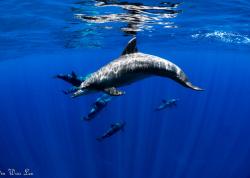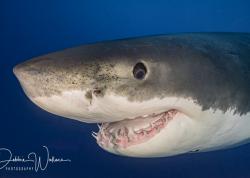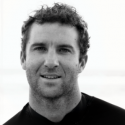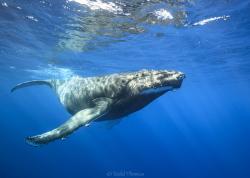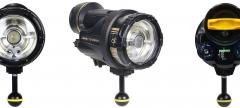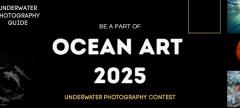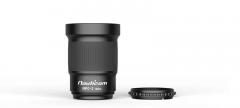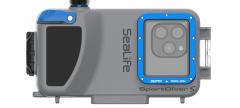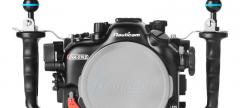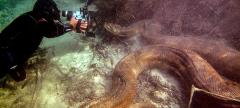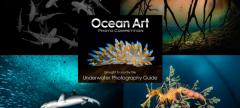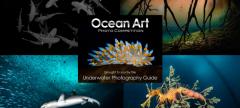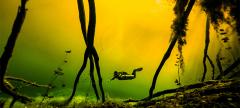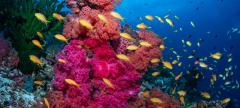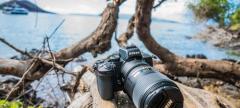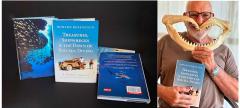Freedive with Orcas as they hunt for herring in the Arctic Circle
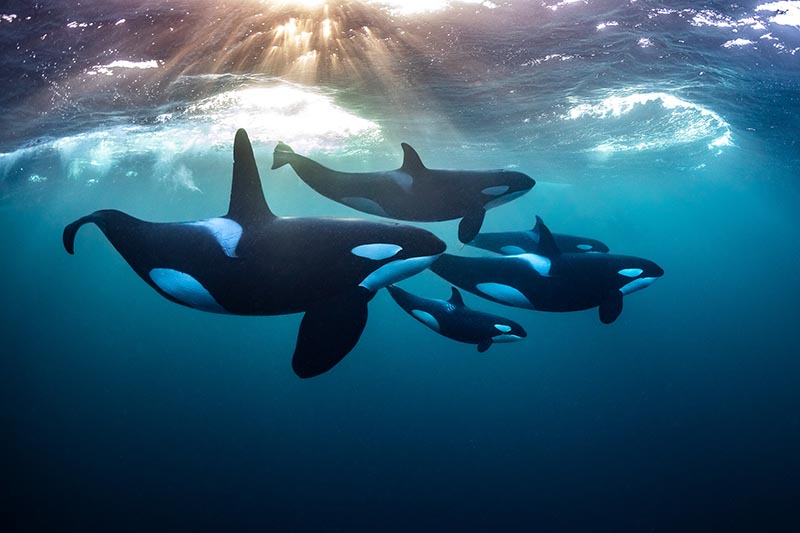
Why it’s Special
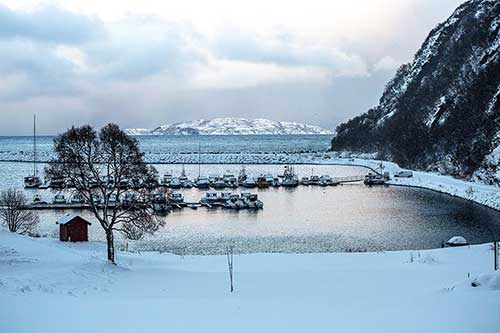 A close encounter with a pod of wild orcas is a dream for many divers. As the ocean’s apex predator, orcas are equally as graceful as they are powerful. While efficient at hunting prey, their ‘killer whale’ misnomer has made them widely feared, yet there’s never been a recorded attack on a human in the wild. Like their dolphin cousins, orcas travel in pods, but unlike dolphins, a male orca can weigh over six tonnes. Although globally distributed, orcas are rarely encountered; you could spend a lifetime underwater and never see one. One of the most reliable places for an encounter is the Arctic Circle, in northern Norway, during the herring run. If you can handle sub-zero temperatures and lots of breath holding to share a few fleeting moments with an orca, then you’ll be rewarded with one of the greatest experiences of your life.
A close encounter with a pod of wild orcas is a dream for many divers. As the ocean’s apex predator, orcas are equally as graceful as they are powerful. While efficient at hunting prey, their ‘killer whale’ misnomer has made them widely feared, yet there’s never been a recorded attack on a human in the wild. Like their dolphin cousins, orcas travel in pods, but unlike dolphins, a male orca can weigh over six tonnes. Although globally distributed, orcas are rarely encountered; you could spend a lifetime underwater and never see one. One of the most reliable places for an encounter is the Arctic Circle, in northern Norway, during the herring run. If you can handle sub-zero temperatures and lots of breath holding to share a few fleeting moments with an orca, then you’ll be rewarded with one of the greatest experiences of your life.
Best Time to Dive
From November to January, orcas can be found hunting the frigid waters of Tromsø, in northern Norway, for spring-spawning herring. Orcas follow the migrating herring into the fjords and, in a perfect scenario, they separate smaller patches of herring from the larger shoals and force them to the surface. November and mid-January are best, as there’s still sunlight in northern Norway. In the last week of November, the Polar Night Season sets in until mid-January, and the days turn to 24 hours of darkness.
Photography tip
- Pack a wide-angle lens and a camera that operates well with minimal light
- When diving in freezing temperatures, you’ll need to adapt your equipment for operation with thick gloves and ensure your camera housing can handle the freezing temperatures. Personally, I wear thinner 5mm gloves which give me a better feel for my camera’s settings; however, they leave me with frozen hands that don’t work properly for days
Capturing that Killer Shot
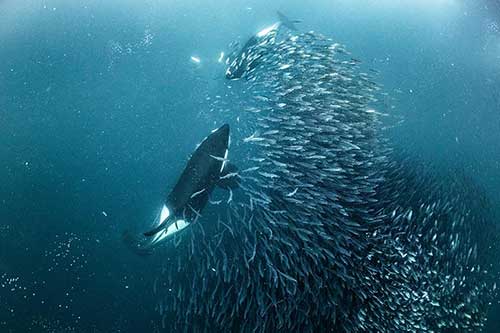 Underwater photographers: this may just be your most challenging shoot yet. Around November in northern Norway, the sun begins its descent below the horizon for winter, heralding the start of the polar nights. The availability of light, or rather ‘the absolute lack of light’ means you’ll be shooting in the dark or, at best, with a small window of sunlight. ‘Freezing’ and ‘dark’ are certainly not ideal conditions for an underwater photographer. Patience and perseverance are essential; I didn’t see any orcas on my first visit to Norway, and it took six consecutive return trips to capture the photos that I wanted. Whether you see orcas or not, this part of the world is alluring and adding to that allure is the northern lights. From September to March, the green, red and violet ‘aurora borealis’ flicker and dance across the dark sky. After a big day on the water, it’s a real treat to rug up with a hot drink and look skyward for one of the planet’s most glorious natural wonders. So, grab that same wide-angle lens that you’ve used all day to photograph orcas, place it on your tripod, set a long shutter speed and, just like the orcas, patiently wait for the magic to happen.
Underwater photographers: this may just be your most challenging shoot yet. Around November in northern Norway, the sun begins its descent below the horizon for winter, heralding the start of the polar nights. The availability of light, or rather ‘the absolute lack of light’ means you’ll be shooting in the dark or, at best, with a small window of sunlight. ‘Freezing’ and ‘dark’ are certainly not ideal conditions for an underwater photographer. Patience and perseverance are essential; I didn’t see any orcas on my first visit to Norway, and it took six consecutive return trips to capture the photos that I wanted. Whether you see orcas or not, this part of the world is alluring and adding to that allure is the northern lights. From September to March, the green, red and violet ‘aurora borealis’ flicker and dance across the dark sky. After a big day on the water, it’s a real treat to rug up with a hot drink and look skyward for one of the planet’s most glorious natural wonders. So, grab that same wide-angle lens that you’ve used all day to photograph orcas, place it on your tripod, set a long shutter speed and, just like the orcas, patiently wait for the magic to happen.
Dive In
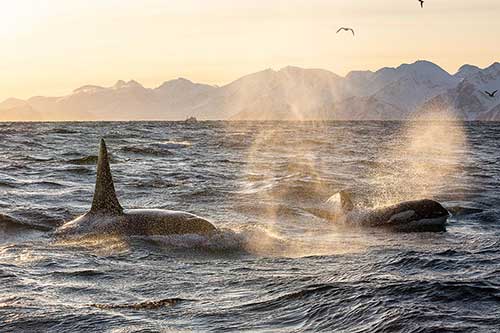 Northern Norway is not your typical diving destination and, until my friend told me about it, I’d never considered diving there. In this part of the world, you won’t find any palm trees or coral cays, in fact, it’s quite the opposite. This is a landscape carved by deep fjords and towering mountains, where Arctic blizzards can deposit metres of snow overnight and comfort levels are stretched. In the six times that I’ve returned to Norway for this experience, there have been many mornings where we’ve spent hours shovelling fresh snow out of our dive boat before we could even leave port. With that said, if you can handle the stinging winds and frigid waters of the Arctic Circle, then you may just come face-to-face with a pod of orcas. And if you’re fast enough on the shutter, perhaps you’ll even snap some photos as they race by, often in the blink of an eye, on their herring hunt. Orcas are smart and their behaviour is fascinating to observe underwater. Each pod has a complex social order, with the oldest females running the show (female orcas can live to 90). These females control the hierarchy of the pod and the security of the young, who remain a part of their mother’s pod for their entire lives. The large male (bull) orcas tend to work the pod’s perimeters with an investigative nature while protecting the females. I vividly remember a time that I came face-to-face with a bull orca. Carefully sliding into the water, I’d hoped to observe a feeding pod from a distance. Immediately, the bull broke away from the pod and approached me head-on. He was about six metres long with a dorsal fin towering at around 1.5 metres. His beauty and inquisitive nature had me mesmerised. Underwater, sound travels four times faster than through air, and orcas rely heavily on sound, especially while hunting. Once you’ve held your breath and dived under, you’ll know that orcas are nearby when you hear their clicks and whistles. It’s likely that they’ll know you’re there well before you can see them. Like bats, orcas make high-pitched noises, and then wait for an echo in order to assess how close something is. Personally, the sound of orcas communicating underwater is one of the loveliest sounds I’ve ever heard (and felt).
Northern Norway is not your typical diving destination and, until my friend told me about it, I’d never considered diving there. In this part of the world, you won’t find any palm trees or coral cays, in fact, it’s quite the opposite. This is a landscape carved by deep fjords and towering mountains, where Arctic blizzards can deposit metres of snow overnight and comfort levels are stretched. In the six times that I’ve returned to Norway for this experience, there have been many mornings where we’ve spent hours shovelling fresh snow out of our dive boat before we could even leave port. With that said, if you can handle the stinging winds and frigid waters of the Arctic Circle, then you may just come face-to-face with a pod of orcas. And if you’re fast enough on the shutter, perhaps you’ll even snap some photos as they race by, often in the blink of an eye, on their herring hunt. Orcas are smart and their behaviour is fascinating to observe underwater. Each pod has a complex social order, with the oldest females running the show (female orcas can live to 90). These females control the hierarchy of the pod and the security of the young, who remain a part of their mother’s pod for their entire lives. The large male (bull) orcas tend to work the pod’s perimeters with an investigative nature while protecting the females. I vividly remember a time that I came face-to-face with a bull orca. Carefully sliding into the water, I’d hoped to observe a feeding pod from a distance. Immediately, the bull broke away from the pod and approached me head-on. He was about six metres long with a dorsal fin towering at around 1.5 metres. His beauty and inquisitive nature had me mesmerised. Underwater, sound travels four times faster than through air, and orcas rely heavily on sound, especially while hunting. Once you’ve held your breath and dived under, you’ll know that orcas are nearby when you hear their clicks and whistles. It’s likely that they’ll know you’re there well before you can see them. Like bats, orcas make high-pitched noises, and then wait for an echo in order to assess how close something is. Personally, the sound of orcas communicating underwater is one of the loveliest sounds I’ve ever heard (and felt).
**This is an edited extract from Ultimate Dive Sites by Todd Thimios, published by Hardie Grant Explore – out on 1 February 2025. Dive guide, photographer and author Todd Thimios has completed more than 3500 dives and within this book he’s curated a collection of 50 of the world’s ultimate diving experiences.
RECOMMENDED ARTICLES
SUPPORT THE UNDERWATER PHOTOGRAPHY GUIDE:
The Best Service & Prices on u/w Photo Gear
 Visit Bluewater Photo & Video for all your underwater photography and video gear. Click, or call the team at (310) 633-5052 for expert advice!
Visit Bluewater Photo & Video for all your underwater photography and video gear. Click, or call the team at (310) 633-5052 for expert advice!
The Best Pricing, Service & Expert Advice to Book your Dive Trips
 Bluewater Travel is your full-service scuba travel agency. Let our expert advisers plan and book your next dive vacation. Run by divers, for divers.
Bluewater Travel is your full-service scuba travel agency. Let our expert advisers plan and book your next dive vacation. Run by divers, for divers.




